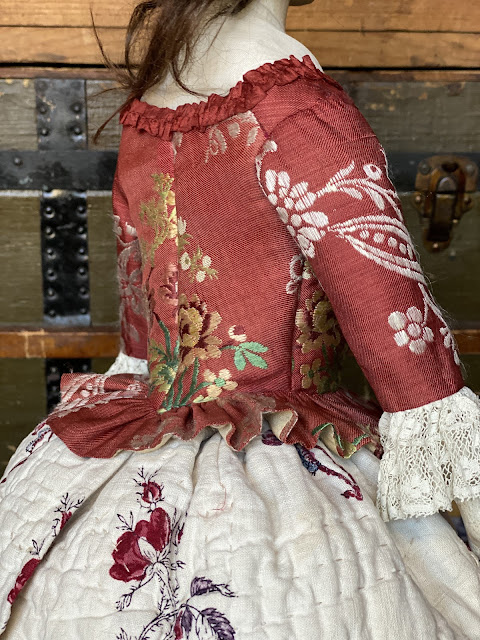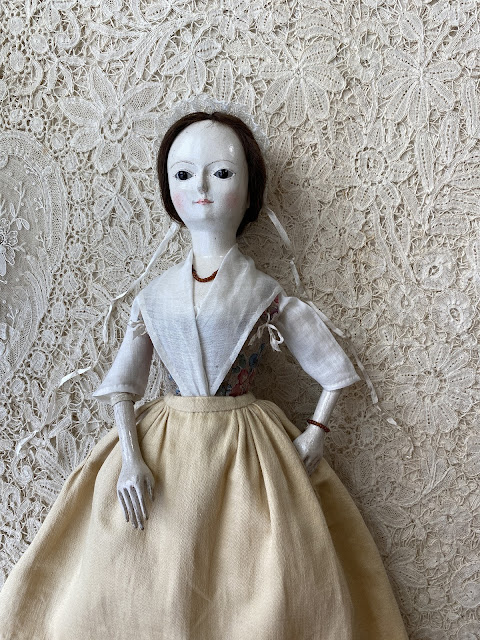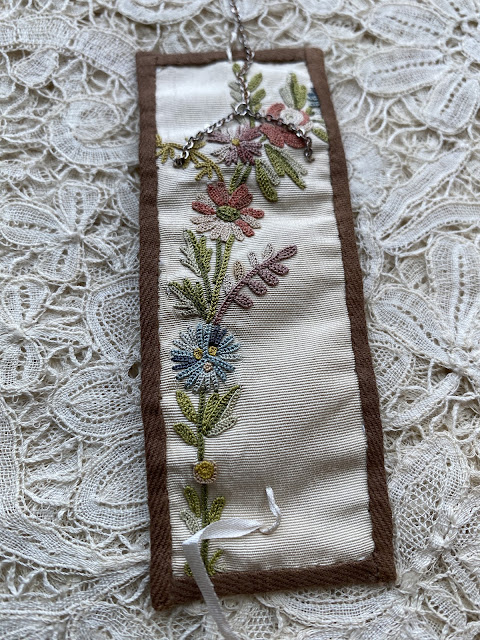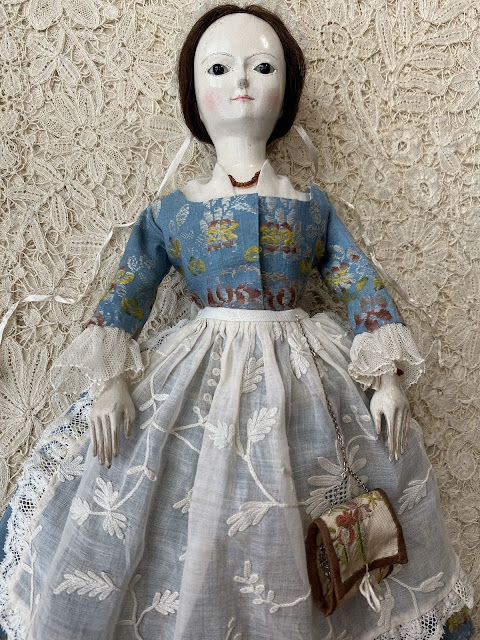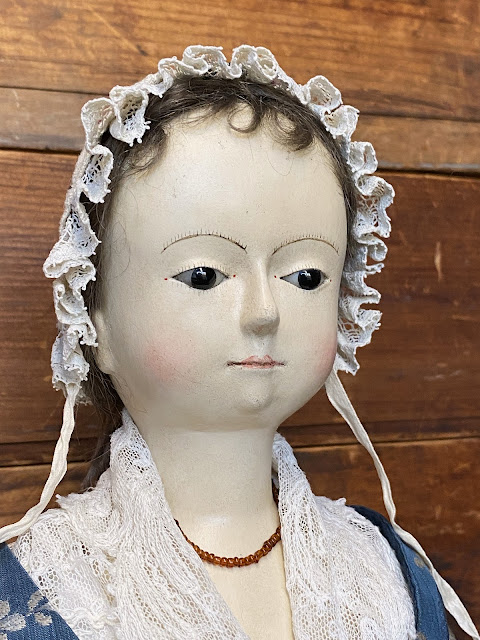
Maria Belén is one of my latest creations, she is a fine hand-carved wooden doll with beautiful antique glass eyes. I have finished making all of her accessories. Please scroll down to see step-by-step photos on how I have dressed her and all the details of this doll. If you are interested in purchasing her, contact me at: soniakrausedolls@gmail.com
SOLD
 She owns an extensive trousseau, her clothing and accessories are all hand-made with early materials and textiles.
She owns an extensive trousseau, her clothing and accessories are all hand-made with early materials and textiles.
The shift is considered the most basic garment of the 18th century woman's wardrobe. It plays an essential role because not only does it protect her clothing from the body moisture but also will protect her from the roughness of some elaborate textiles, like the textile her stays are made of, brocaded with metallic and silk threads. The underclothing (shift, dickey petticoat and petticoat) is made of antique cotton fabrics dating from the Victorian Era.

The stays are back lacing, and these are made of a remarkable silk brocade textile with silver threads, dating from the early 18th century. Her cotton shift will protect her from the metallic elements.
Her skirt and petticoat are supported by a bum roll made of cotton fabric from the Victorian era.
Double cloth pockets, early 19th century Ottoman, silk and metallic thread embroidery on a hand loomed ground.

During the 18th century women worn layers of petticoats, not only to achieve the desired fullness and shape to the dress, protect the luxurious textiles against the elements, withstand the cold in winter, but also, they were a crucial part of the etiquette rules (dress code) for a lady's social standing.
The side seams of her petticoat and skirt have pocket slits to access her secret cloth pockets!

The fichu (scarf) was a must-to-have accessory in 18th century women's dress, they were made with very thin, delicate textiles, mostly embroidered with silks and sometimes embellished with metallic threads!
Maria Belén has beautiful thin and elongated hands and fingers, a distinct feature of some 18th century wooden pandora dolls.
She is wearing a two-piece dress made of a stunning blue silk damask dating from the mid 19th century.
I made a hussif (sewing kit) for Maria Belén and she loves it!
The outer portion of the hussif is made of an early 19th century Ottoman embroidery, the inner portion is lined with a 1880's quilted cotton textile and has a pouch stitched in the middle to hold her sewing tools. It comes with an antique miniature stork scissor as well, so cute!
Apron: Muslin, hand embroidered Point de Chainette, France late 19th century. Lovely early textile, one of my favorites in my collection of early embroideries♥
Headdress: Inspired by an 18th century English coif. This embroidered textile is a wonderful example of the skilled artisans of the Ottoman Era.
And last but not least are her shoes, 18th century brocade silk with antique cut steel buckles.














